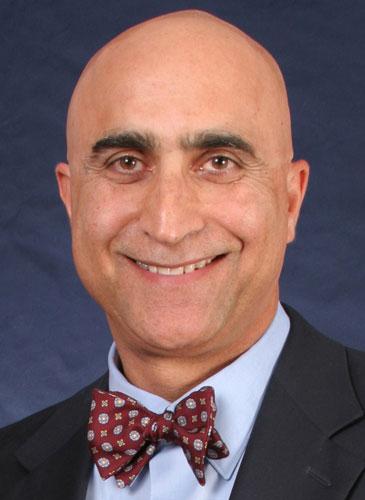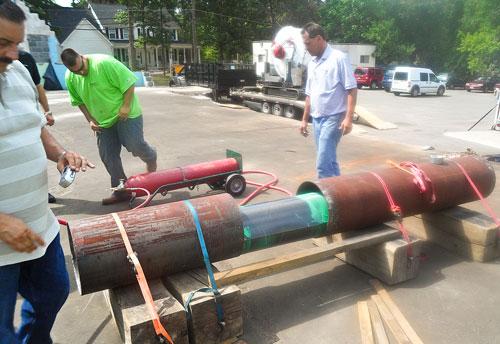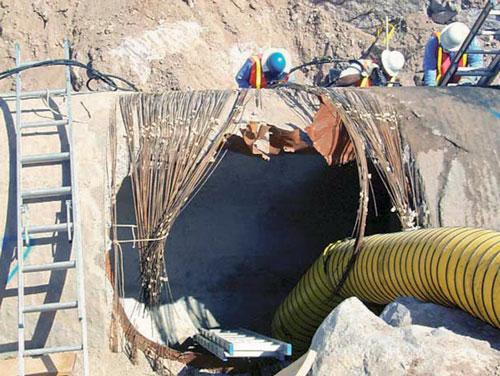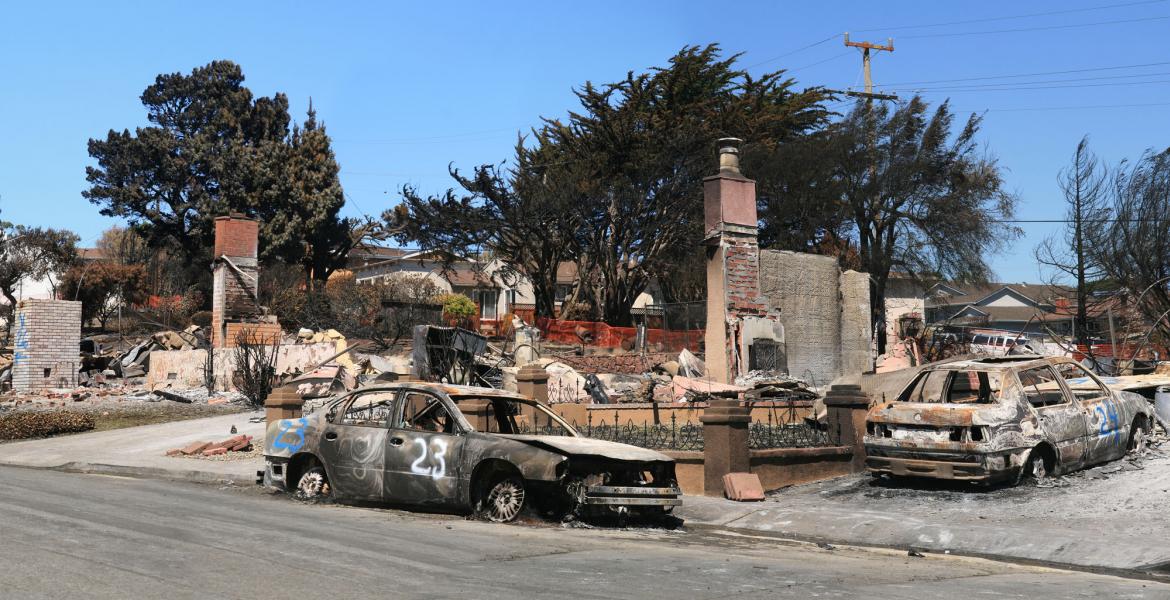UA Engineer’s Superlaminates are Industrial Surgery for Failing Infrastructure
Beneath our feet are many thousands of miles of pipe, some more than 100 years old. Gas, oil, water and sewage seep, and sometimes gush, through corroded joints and defective welds every day. Pipeline owners often know nothing about the condition of the lines they operate, and even less about where the next gas explosion or contaminated city water supply will occur.
Even when problems with failing infrastructure can be detected, the methods of repair currently available are technologically outdated, logistically complex and prohibitively expensive. A University of Arizona engineering professor may have a solution to this infrastructure problem that's growing deadlier each year.
New reports by the National Transportation Safety Board and the Gas Technology Institute could mean fewer gas explosions due to pipeline ruptures, like the one that happened a year ago in San Bruno, Calif.
Quality Fail
On Sept. 9, 2010, a 54-year-old gas pipeline ruptured in a residential area of San Bruno. The cause was a defective weld in a 30-inch-diameter pipeline. The gas explosion blasted a crater about 72 feet long and 26 feet wide. The explosion and fire killed eight people and destroyed 38 homes.
The NTSB accident report estimates that almost 50 million cubic feet of natural gas were released during the incident. "The accident pipe would not have met generally accepted industry quality control and welding standards in 1956," the Aug. 30 report states. "Indicating that those standards were overlooked or ignored."
The month before the NTSB report was released, the Gas Technology Institute published a test report stating that PipeMedic, a new technology that uses carbon and glass laminates to repair and replace failing pipelines, met or exceeded industry standards. GTI is a nonprofit research and development organization that serves the natural gas industry.

PipeMedic was developed by Mo Ehsani, professor emeritus of civil engineering at the University of Arizona College of Engineering and a pioneer in the structural application of fiber-reinforced polymers, or FRPs.
Ehsani was a faculty member in the UA department of civil engineering and engineering mechanics for almost 30 years before he left in 2009 to focus on his structural engineering repair business, QuakeWrap, which he founded in 1994. His research at UA focused on the seismic behavior of structures and on innovative approaches to repairing and retrofitting civil structures using FRPs.
Ehsani describes PipeMedic as a "superlaminate" because it uses crisscrossing carbon fibers and layers of glass fabric that are saturated with resin, then pressurized and heat-treated to create strips about 0.025 inches thick.
Industrial Stent
"It works like a stent," Ehsani said. "We coil the laminate around what is essentially a balloon with wheels and insert it into the pipe." The area to be fixed might be 1,000 feet away from the pipe entry point, Ehsani said, which means that pipe can be treated even if it's buried under buildings or roads.
"When the balloon is at the repair area, we pump in air and the laminate unravels and presses against the pipe," he said. "After the epoxy has dried, we deflate the balloon and remove it."
The superlaminates created at Ehsani's production facility in Tucson, Ariz., are shipped in rolls hundreds of feet long, ready for insertion into leaky pipes. The main advantage of Ehsani's laminates over most current methods is that prefabrication enables them to be strength-tested and gives them rigidity. This allows the laminates to be inserted into pipes in cylindrical coil form, which is retained as the balloon presses the laminate against the inside of the pipe.

Currently, most pipe fixes use the "wet lay-up" method, which involves soaking fiber in resin, applying it manually to the problem area, and waiting for it to set, or cure. Precise control is not possible and the strength of the repair cannot be determined until curing is complete, when samples of the cured fiber-resin can be tested to determine whether the fix is up to specification.
Unlike Ehsani's laminates, the wet fiber-resin mix is too squashy to fix large areas. Health and safety are also a problem with wet lay-up because of harmful volatile organic compounds from the resin and associated accelerators and catalysts.
PipeMedic can be used to strengthen pipes, culverts and aqueducts made from steel, cast iron, corrugated metal, clay, brick, concrete, and wood. PipeMedic's own tests show that this superlaminate could actually replace, rather than strengthen, old pipes.
New Lines
Many old gas pipelines have "drip pots" every 1,000 feet or so to collect condensation, which is then pumped out. Modern gas pipelines don't need drip pots, and when gas companies upgrade older gas lines by inserting thin liners, the old drip pots leave 2-foot breaks in the original pipe. The liners prevent corrosion of pipe joints but depend on the structural integrity of the pipe to be effective. Without supporting pipeline, the liners balloon out of the gaps and explode.
The GTI test showed that PipeMedic could be installed as a standalone section of pipe, bridging the gap left by an old drip pot or T-junction, and withstand pressures more than four times those used in modern pipeline operation.
Utility owners are thinking about the next generation of subsurface pipework. Some want to line all new pipe with extra-thick superlaminates, so that when the external pipe eventually fails, the superlaminate becomes the de facto new pipe, but with no new construction.

"Carbon is much too expensive to construct a half-inch thick superlaminate liner that could withstand soil pressures and traffic loads," Ehsani said. "So we have taken a page from the book of the aerospace industry and built a liner using an internal honeycomb structure." This product, called StifPipe, is already in use in a rain catchment system in Brooklyn Bridge Park in New York.
Ehsani occasionally doubts his sanity, leaving the safe confines of academic research for the cut and thrust of the marketplace. "I left UA when the economy tanked, but I had a passion," he said. "It's great because it allows us to create products and take them to market quickly."
All the signs are that Ehsani will have to get quicker still, as our aging infrastructure rots away beneath us and the calls flood in about pipes bursting and foundations crumbling.


